Picture this: You’re a local business owner, juggling a thousand tasks. Your employees? They’re sluggish, disengaged, and about as motivated as a sloth on a rainy day. You know you need to light a fire under them, but your budget’s tighter than a new pair of shoes.
Here’s the kicker: Throwing money at the problem isn’t the answer. It might be the exact opposite of what you need.
I’ve spent years in the trenches with small businesses, and I’ve seen firsthand what works and what spectacularly fails when it comes to boosting employee motivation. The truth? The most powerful motivators often cost the most valuable resources: next to nothing.
But before we dive into the nitty-gritty, let me ask you this:
What if I told you that the key to your company’s success, unlocking your own team member’s potential, is already within your grasp?
It’s true. And it doesn’t require a fancy consultant or a budget-busting overhaul of your team member or company’s mission or benefits package.
In the next few minutes, I’m going to share five low-cost Employee Motivation Strategies that will transform your workplace. These aren’t just feel-good fluff – they’re battle-tested strategies that have turned around struggling teams and supercharged thriving ones.
Are you ready to see your employees come alive with energy and purpose? To increase employee motivation? To watch employee productivity soar without breaking the bank?
Buckle up, because we’re about to flip everything you thought you knew about Employee Motivation Strategies on its head.
Affordable and Effective Employee Motivation Strategies and Engagement for Local Businesses

-
Flexible schedules can boost morale and reduce turnover.
-
Open communication fosters a transparent and inclusive culture.
-
Engagement improves productivity and reduces job search rates.
Implement Flexible Work Schedules For Employee Engagement
Flexible work schedules are an effective way to increase motivation and enhance employee morale. For local businesses, flexibility can mean adjusting start and end times or offering remote work options. The key is balancing employee needs with business requirements. This approach to flexible scheduling can help reduce turnover, as 95% of workers are seeking new jobs due to a lack of engagement.
Benefits of Flexible Work in Boosting Morale
-
Stress Reduction: Allowing employees to manage their schedules can lower stress levels. Stress often leads to burnout and dissatisfaction.
-
Work-Life Balance: Flexibility helps employees balance personal and professional commitments. This can increase happiness and loyalty.
-
Increased Productivity: Employees who control their schedules often work more efficiently. This autonomy can lead to higher productivity.
How to Align Flexibility with Business Needs
-
Assess Operational Requirements: Determine which roles can allow for flexible hours without impacting productivity.
-
Consult Employees: Get feedback from employees about their scheduling preferences. This can provide insights into how to structure flexible options that benefit both the staff and the company.
-
Establish Clear Guidelines: Set rules around core working hours or required days in the office, if necessary. This helps maintain structure while offering flexibility.
-
Monitor Progress: Keep an eye on performance and make adjustments as needed. Regular reviews help ensure business needs are still being met.
Encourage Open Communication to Motivate Employees
Open communication is crucial for fostering positive feedback transparent and engaging a positive work culture and environment. Effective communication policies can ensure that employees feel heard and understood, promoting a strong employee voice, increasing engagement, and reducing turnover.
Methods to Promote an Open-Door Policy
-
Management Accessibility: Make sure managers are approachable. Encourage managers to regularly check in with their teams.
-
Regular Meetings: Hold consistent team meetings where employees can voice opinions. Regularly scheduled meetings create routine opportunities for dialogue.
-
Feedback Channels: Set up anonymous suggestion boxes or digital forms. Employees might share more openly this way without fear of negative consequences.
Tools and Technologies to Support Communication
-
Digital Communication Platforms: Implement tools like Slack or Microsoft Teams to facilitate seamless communication. These platforms enable quick, informal interactions among team members.
-
Surveys and Feedback Forms: Use cloud-based survey software to gather feedback easily. Consistent employee feedback collection is key to understanding and addressing engagement issues.
-
Internal Newsletters: Regular updates on business news and individual achievements can enhance transparency. Recognition of employee accomplishments in newsletters can boost morale.
Investing in affordable strategies to empower employees like flexible work and open communication can have a profound impact on job satisfaction and retention. Implementing these tactics doesn’t just answer the question, “How do local businesses motivate their employees?” but also builds a lasting culture of engagement and organizational success. Understanding how employee motivation directly relates to revenue generation can provide additional insights for business owners. Research has shown that motivated employees can lead to increased sales, better customer service, and ultimately, higher profit margins. For a deeper dive into this critical topic, check out our post on the importance of employee motivation in driving revenue growth and profit.
Local businesses that focus on employee happiness often see significant benefits like higher productivity and reduced turnover rates rewarding employees. Keeping employees motivated and engaged means they are less likely to leave, which can save businesses from the costs associated with high employee turnover. Discover how conducting surveys on employee engagement can be pivotal in enhancing workplace satisfaction and driving efficiency in your small business.
Additionally, leveraging technology can significantly aid in maintaining employee engagement. One way to do this is by utilizing effective employee engagement software that fosters communication and collaboration, allowing your team to thrive even in challenging situations.

Delivery notifications and tracking improve customer satisfaction by 27%.
Metrobi automatically notifies your receivers of ETAs, provides delivery tracking, and collects delivery feedback.
DIY Team Building Activities that Boost Team Spirit

-
Improve team spirit without heavy costs.
-
Create meaningful connections and enhance communication.
-
Easy steps to host DIY activities in-house.
Organize Team Building Workshops
Steps for Planning a Workshop Using In-House Resources
-
Identify the Purpose: Start by clarifying the goal of the workshop. Is it to improve communication, foster collaboration, or simply to have fun? Understanding this will guide your planning.
-
Leverage In-House Talent: Look within your organization for talents or skills that others can learn from. This could be a manager with strong leadership skills or an employee who excels at training others.
-
Prepare the Content: Break down the workshop content into digestible parts. Allocate time for each section and include interactive segments like role-playing or group discussions.
-
Select a Venue: Use an area within your office that’s free of distractions. A conference room works well if you’re expecting a small group. Make sure the space is conducive to interaction.
-
Create a Schedule: Draft an agenda that reflects the flow of the workshop. Include breaks to give participants time to regroup and absorb information.
-
Gather Materials: Collect any necessary materials ahead of time. This may include presentation slides, flip charts, markers, or props.
-
Send Invites: Use email or internal communication tools to invite participants. Clearly state the purpose, date, and time of the workshop.
-
Conduct the Workshop: Begin with an introduction, explaining the workshop’s relevance. Keep the session engaging with questions and activity-based learning.
-
Collect Feedback: After the workshop, use a feedback form to gather insights. Understanding participant experiences will help improve future workshops.
Choosing Relevant Topics That Engage Employees
-
Assess Current Needs: Begin by surveying to understand what areas employees feel they need to improve or what they are interested in. This can guide you in selecting the right topics.
-
Focus on Skills Gaps: Identify common skill gaps within teams or across the company. Workshops on communication, problem-solving, and negotiation can be impactful.
-
Promote Areas of Interest: Ask employees about their interests outside of work. Topics such as personal finance, stress management, or creative thinking can be both educational and engaging.
-
Choose Fun, Interactive Topics: This could include topics like ‘Team Building through LEGO’ or ‘Escape Room Challenges’. The goal is to foster enjoyment alongside learning.
-
Evaluate and Refine: After each session, get feedback on topic effectiveness. Use this data for future topic selections.
Plan Monthly DIY Challenges
Ideas for Simple, Fun Challenges
-
Fitness Challenges: Encourage employees to participate in a step count challenge. Keep it simple by setting goals and providing tips for increasing daily steps.
-
Creative Contests: Host a photo caption contest or an office decor contest, where each team decorates their space with a theme.
-
Book Club: Start a book club focusing on personal development or industry-related books. Encourage discussions during lunch breaks.
-
Trivia Quizzes: Organize a monthly quiz on various topics, from general knowledge to company history.
-
Cooking Competition: Employees can showcase their culinary skills by preparing dishes that can be tasted and judged during lunch.
Ways to Encourage Participation Without Big Expenses
-
Invite Participation: Use emails and office posters to generate interest. Highlight fun aspects and benefits of participating in these challenges.
-
Build a Reward System: Give tokens of appreciation like certificates, and badges, or mention winners in meetings. This recognition can be highly motivating. Using employee recognition software to streamline and personalize these gestures can make the recognition even more impactful and consistent, further boosting employee morale.
-
Create Teams: Encourage team participation. Forming small teams enhances engagement and social interaction.
-
Use Social Media: Create a private group or space on social media platforms where employees can share their progress, and photos, and encourage each other.
-
Review and Adapt: Continuously gauge the level of engagement and make adjustments. Pay attention to what employees enjoy the most, and tailor future challenges accordingly.
Budget-Friendly Workplace Incentives to Motivate Staff

Use non-monetary perks to boost morale without breaking the bank.
Personal development can lead to happier, more skilled employees.
Engage low-paid or unskilled workers with creative incentives.
Offer Non-Monetary Perks
Non-monetary perks can be a powerful motivator. Here’s how many ways to motivate employees feel motivated to use them effectively.
List of Meaningful Perks
Additional Time Off: Grant extra time off for holidays, birthdays, or just a mental health day. It’s a proven benefit since more than 80% of workers already receive paid time off.
Reserved Parking Spaces: This small gesture can make a big difference, especially in locations where parking is scarce.
Flexible Work Hours: A flexible schedule is a rare perk, with only 12% of workers having access. Offering flexibility can set your business apart.
How to Promote and Manage These Perks Effectively
Communicate Clearly: Make sure employees know what perks they can access and how to do so. Use emails, posters, or meetings to spread the information.
Create Simple Guidelines: Outline how employees can apply for perks like extra time off or flexible hours. Clearly state any limits or conditions.
Monitor Usage: Track which perks are most popular and assess their impact on morale and productivity. Adjust offerings based on employee feedback to ensure they are meeting needs.
Create Personal Development Opportunities
Personal development can be a cost-effective way to motivate employees by focusing on their personal lives for professional development and growth.
Setting Up Mentorship Programs
Identify Mentors and Mentees: Look for experienced employees willing to share knowledge. Also, identify employees who want guidance. This can be through surveys or informal conversations.
Define the Structure: Set regular meeting schedules and goals for mentorship relationships. Regular check-ins help maintain momentum and commitment.
Measure Outcomes: Gather feedback from participants to evaluate the program. Make improvements based on this input to ensure effectiveness and satisfaction.
Encouraging Skills Development Through Online Courses
Choose Accessible Courses: Select free or low-cost online courses related to your business needs. Resources like Coursera or LinkedIn Learning often offer quality content at little to no cost.
Create Learning Paths: Offer suggestions for courses that align with employee goals. Encourage staff to take courses that will help them in their current role or prepare them for future roles.
Provide Time and Resources: Allocate some work hours for courses. Access to a quiet space can also help employees focus on learning.
Cost-Effective Employee Recognition Programs

Tools to show appreciation can boost morale without high costs.
Choose meaningful awards for more impact.
Public recognition can enhance team spirit.
Develop a Peer Recognition System
Creating a system where employees can feel motivated to recognize each other can greatly improve workplace motivation and morale. Here’s how to build it.
Designing a System for Peer Nominations
Define the Purpose: Clearly state the goals of your recognition program. Is it to boost morale? Improve teamwork? This clarity will guide how the system is shaped.
Create Guidelines: Have clear rules on how nominations work. Specify who can nominate whom. For instance, can only peers nominate peers, or does it include management? Outline how often nominations can be made.
Implement a Nomination Process: Create an easy-to-use nomination form. This could be a digital form or a physical one. Include fields for nominator details, nominee information, specific achievements, and reasons for recognition.
Set Up a Review Panel: Form a small team to review nominations. This could be HR, a mix of managers, and selected employees. They ensure nominations are fair and meet the criteria.
Regularly Review and Adjust: Revisit the system periodically. Gather feedback from users to improve the process. This keeps the program relevant and appreciated.
Selecting Meaningful Awards or Prizes
Determine the Budget: Allocate a budget for awards. This helps in deciding what type of prizes are feasible, be it gift cards, canvas wall art prints, small trophies, or days off.
Choose Awards That Reflect Company Culture: Align prizes with your company’s values. This could mean selecting eco-friendly items for a sustainability-focused business.
Offer Variety: Don’t limit awards to physical items. Consider days off, flexible hours, or even special parking spots as awards.
Ask Employees for Input: Survey employees about what kind of recognition is meaningful to them. This ensures the rewards are genuinely motivating.
Rotate Awards: Keep things fresh by rotating types of awards offered. This maintains interest and excitement in the program.
Publicly Acknowledge Achievements
Recognizing employee performance achievements in the workplace recognition a public way makes the employee feel valued and motivates others.
Ways to Celebrate Successes at Team Meetings
Start Meetings with Celebrations: Dedicate the first few minutes of team meetings to recognizing achievements. Mention specific employees and their accomplishments.
Use Stories to Highlight Achievements: Share individuals’ stories. Not just the result but the effort behind it. This makes the recognition more personal.
Encourage Peer Shout-Outs: During meetings, invite team members to acknowledge their peers. This builds a culture of appreciation and teamwork.
Set a Consistent Recognition Schedule: Don’t leave it to chance. Make it a fixed part of the agenda, so it’s a regular and expected feature.
Utilizing Company Newsletters or Emails for Praise
Create a Recognition Section: Dedicate space in company newsletters or a specific email series for acknowledgments.
Feature Employee Spotlights: Introduce a section where individual achievements are spotlighted. Highlight not only the what but also the how and why it matters.
Rotate Contributors: Allow different team members to contribute to the recognition column. This encourages broader participation and a diverse viewpoint.
Include Photos: Whenever possible, add pictures. They make recognition more personal and memorable.
Maintain Consistency: Regularly update newsletters or send these emails consistently. This ensures recognition isn’t forgotten amidst other updates.
By providing constructive feedback, developing peer recognition systems, and publicly acknowledging achievements, companies can enhance employee satisfaction, morale, and motivation. These strategies do not require substantial financial investment but can yield significant benefits in employee engagement and satisfaction.
Empowering Your Team, Elevating Your Business

Local business owners, you now hold the keys to unlock your team’s potential. These five low-cost strategies to boost motivation aren’t just about saving money—they’re about investing in your most valuable asset: your people. By implementing flexible schedules, fostering open communication, training and development opportunities, and organizing team-building activities, you’re not just boosting motivation; you’re building a culture of trust and collaboration. Remember, recognition and personal development opportunities are powerful motivators that cost little but yield significant returns.
As you apply these techniques, watch for signs of increased engagement and address any issues promptly. Your commitment to your employees’ growth and well-being will ripple through your business, enhancing productivity and customer service. The journey to a more motivated workforce starts now. Take that first step today—whether it’s planning a team challenge or setting up a peer recognition system. Your future success depends on the actions you take right now. Are you ready to transform your workplace and watch your business thrive?



























